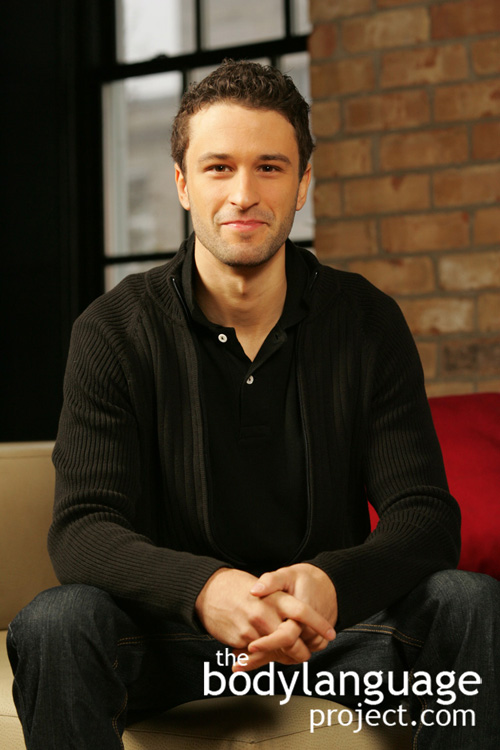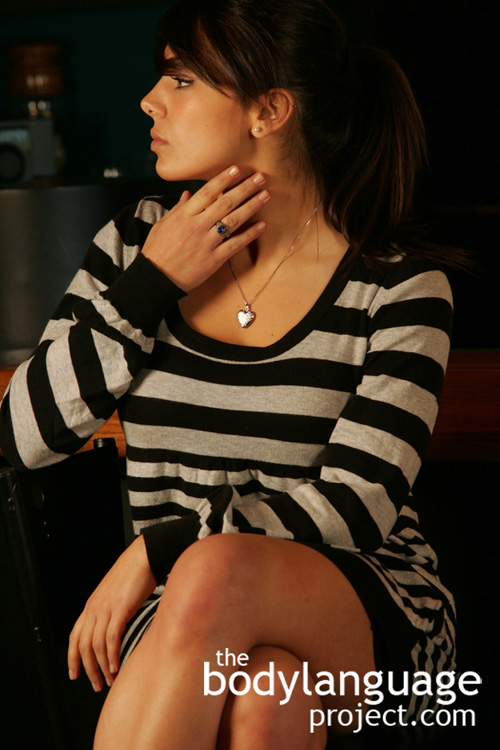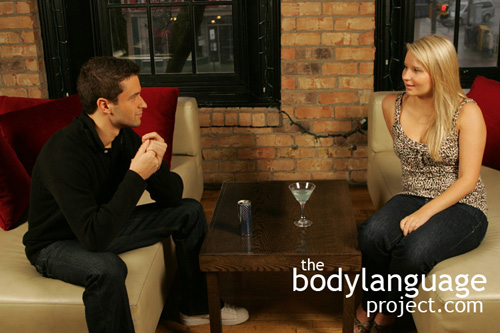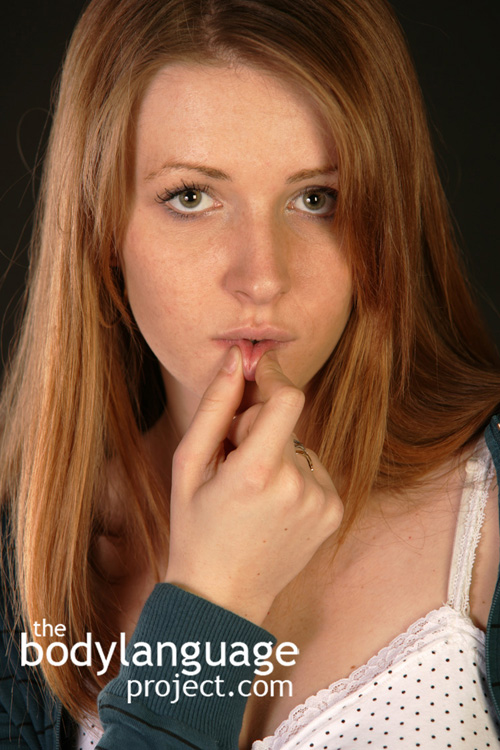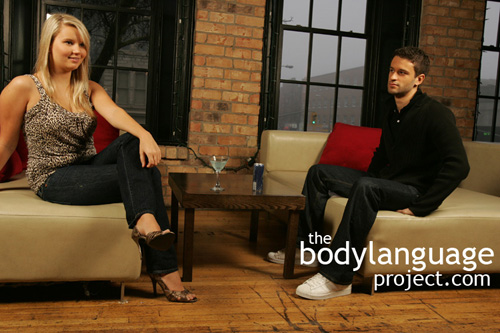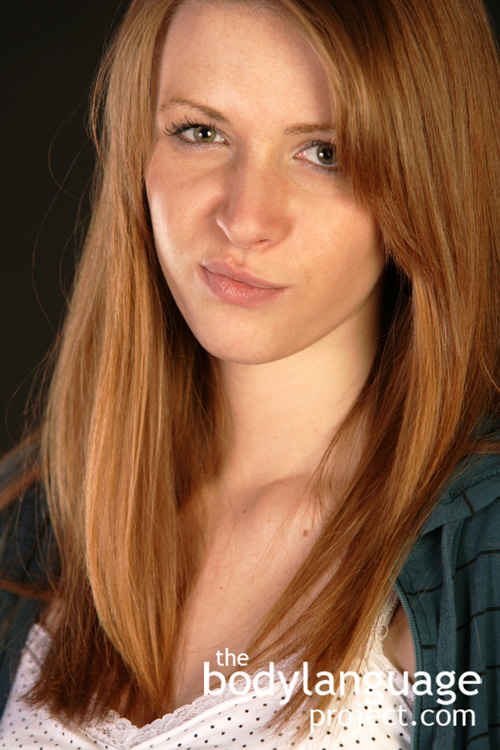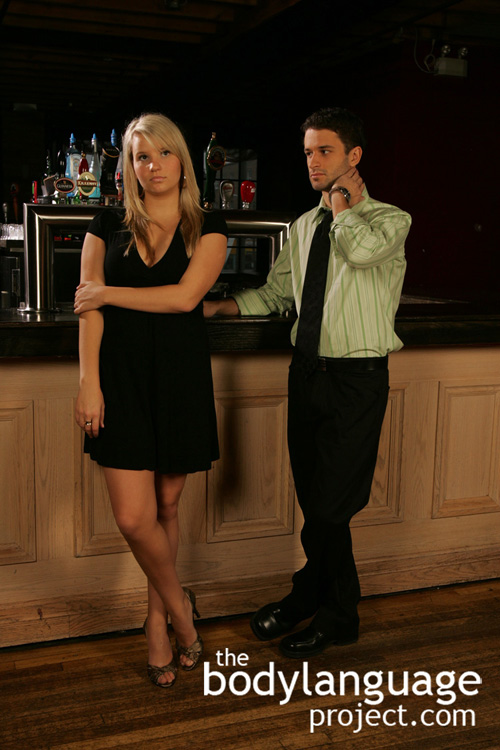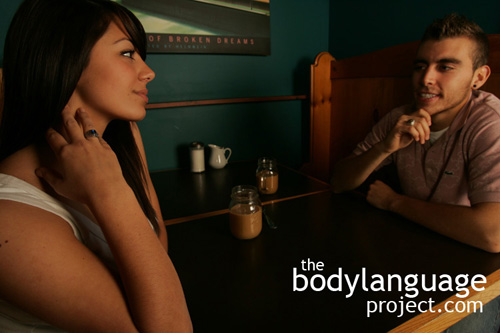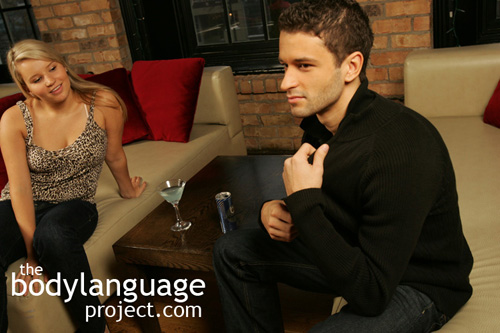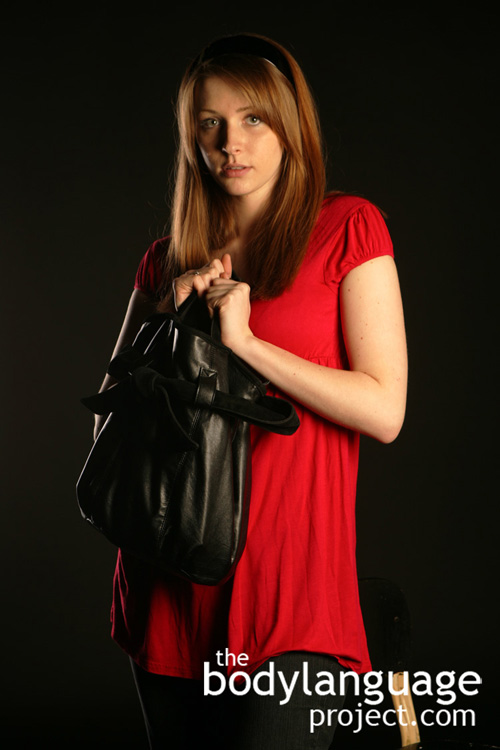
An interested listener is focused on the entire person, their gestures, voice tone and the information delivered.
Meeting in crowded areas offers plenty of distractions, which in and of itself might lead one to belief that measuring attention would be difficult. However, the opposite is actually true; in other words, it’s easier to measure interest in busy places because the eye can be caught wondering. As we covered earlier in the chapter on eye language, we can verify interest based on where eyes are cast. The eyes tell where the body wants to be, and when the mind is fully engaged on the presentation, the focus will be on the speaker rather then what is going on around them.
Looking away rarely happens with someone who is completely engrossed in a conversation unless they do so to concentrate. We know from an earlier discussion, that faces are complicated making it difficult to process information. However absent of complex thought, we know that when someone looks away, it’s due to disinterest in the subject matter. Take for example, a very important news item appearing suddenly on television and the sequences of events that follow. First, we try to quiet a room so we have time to tune into the broadcast, next we locate the remote and turn the volume up loud enough so that even random noises don’t supersede the broadcast. Our eyes become fixated at the exclusion of anything else in the room and our ears become finely tuned to the voice of the broadcaster. When completely engaged, there is a fear of missing something important. This doesn’t just occur while watching television or movies, but can happen when in deep conversation, while reading something interesting or any other task for that matter. Any husband will tell you how easily it is to “tune” women out when watching sports!
An interested listener is focused on the entire person, their gestures, voice tone and the information delivered. For most, the picture they pick up about the speaker’s body language is subconscious, but it does help them form an overall impression of their honesty, integrity, emotionality and so forth. Therefore the focus doesn’t stop on the words alone, but on the entire message. An attentive listener is directed, having their bodies oriented toward the speaker, their arms open and apart willing to take information in, their legs will be crossed or open but aimed at the speaker, their head might be cocked to the side at forty five degrees showing interest, and any information they add will be appropriate to the given subject rather than off topic.
There will be times, when a fully attentive person will look away, down or about the room, but these ganders are few and brief, with the primary attention placed back on the speaker. It has been shown that up to eighty percent eye of contact is made while listening and about forty to sixty percent while speaking. Thus, we can measure the level of interest simply by making note of how often the person looks away. Someone that is bored will almost seem to look everywhere but at the speaker, or will appear to glaze over in an unblinking stare. Looking away is a subconscious indication that the other person is looking for an escape route – a way out of the conversation.

